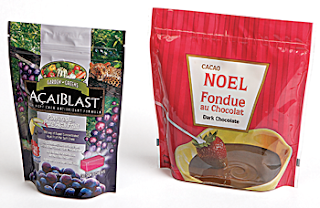Timing
Sometimes a fast turnaround of an order for flexible packaging is simply the result of good luck by virtue of fortuitous timing. If you happen to call when we do not have a high volume of pending orders, your job will move quickly through our pipeline. But it’s a gamble and not a great way to optimize supply chain dynamics. It’s far better to plan ahead and order well in advance before the week you need product in hand. With advance notice, we can schedule the production of your order so you will be assured of receiving it when you need it.
Many companies have adopted a Just In Time (JIT) Inventory Management strategy to minimize the expense of having extra inventory sitting around. In theory this strategy has many benefits, however, in practice it's not possible to order custom printed and converted food packaging or medical device packaging on the spur of the moment and be able to have them. This approach may work for commodities but not custom manufactured flexible packaging. A more moderate and practical strategy should involve some forecasting. We encourage our customers to engage us in the planning process as you estimate when your packaging will be needed based on historical activity. That way you avoid a significant inventory backlog, and get what you need on time.
New Customers or New Specifications for Current Customers
We do everything possible to make sure your order is produced exactly to your specifications each and every time. A critical part of our control process for each new customer order and for any change to an existing customer's product is presenting documentation containing the finished package’s features to you, the customer, for final approval and sign-off before the production run begins.
We'll let you know when to expect the documentation and when we need it back to assure your product is produced according to schedule. You play an important role in achieving your desired delivery date by making sure the designated recipient of the documentation is available to review/approve the specs and return them in a timely manner.
Our Pledge to You!
The LPS sales and customer service team will do everything possible to ensure your order is processed in a timely manner and according to the production schedule that’s discussed with you. We’ve got a system of checks and balances to ensure your job doesn’t slip through the cracks or fall behind schedule. If unforeseen circumstances arise that delay the planned delivery time, we always do our best to keep you informed.
Forecasting and anticipating your packaging supply needs and developing a long-term relationship with your LPS representative are all ways you can promote a fast turnaround on your next custom order!

